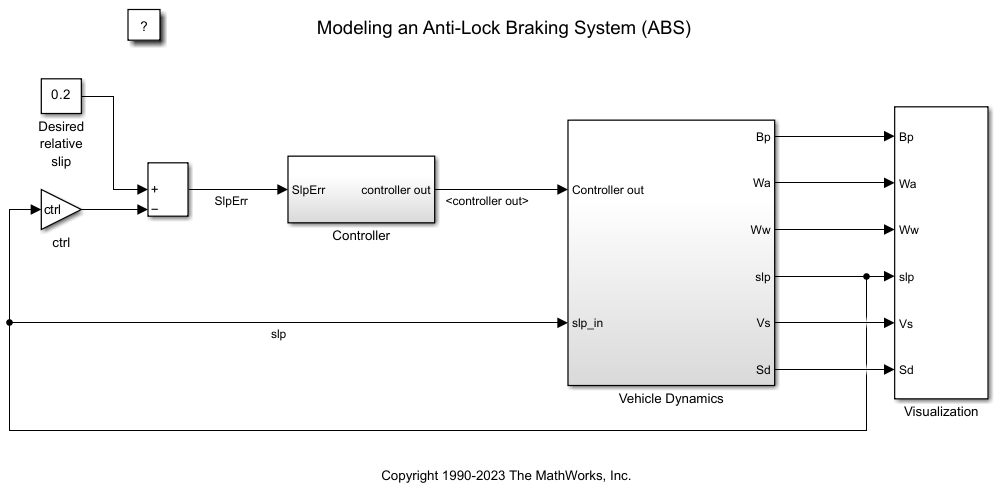基线测试
本教程展示如何使用 Simulink® Test™ 创建和运行基线测试,以在对模型进行更改后测试回归。
当您运行基准测试用例时,会将仿真输出数据与基准数据进行比较。要使用 Simulink Test 运行基线测试,您需要创建一个基线测试用例并设置测试属性。您可以使用测试管理器从在测系统中捕获已记录的信号数据,或从现有文件中添加基线数据,并设置信号容差以指定测试的通过和失败准则.在对模型进行修改后,您可以运行基线测试用例,以验证新的仿真输出数据是否满足通过和失败的判定准则。
在本教程中,您将按照以下步骤创建测试用例、捕获基线数据、运行测试并创建结果报告:
检查模型
本教程使用 sldemo_absbrake 模型。要打开模型,请输入:
open_system("sldemo_absbrake");
sldemo_absbrake 模型仿真了配备防抱死制动系统 (ABS) 的车轮行为,并将信号记录在 MATLAB 工作区中.要仿真模型,请在仿真选项卡上点击运行。图显示了制动时的车辆和车轮速度、滑移以及车轮加速度。有关模型物理和分析的更多信息,请参阅防抱死制动系统建模。